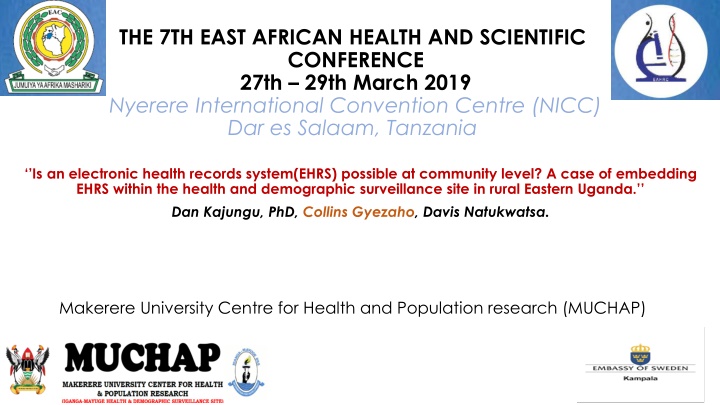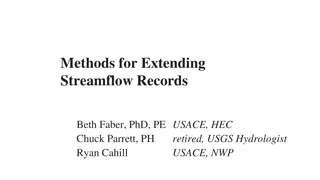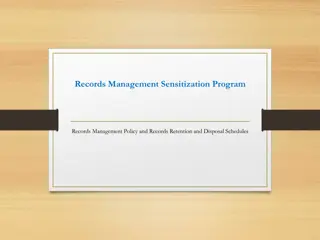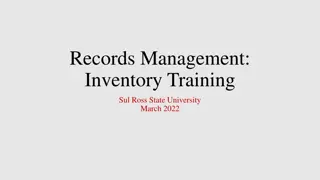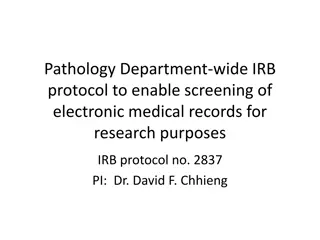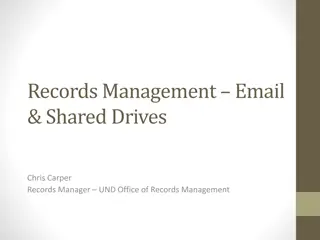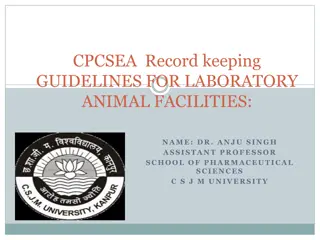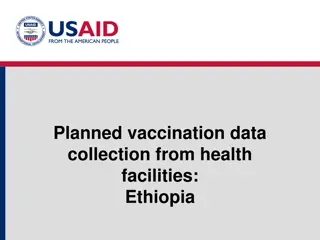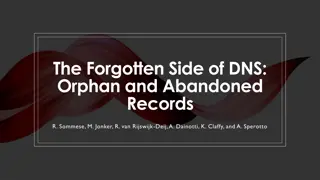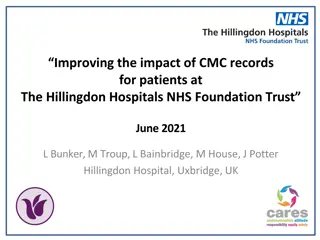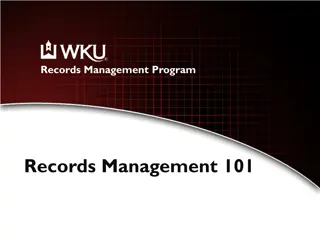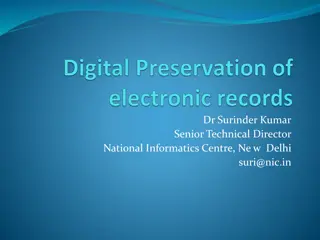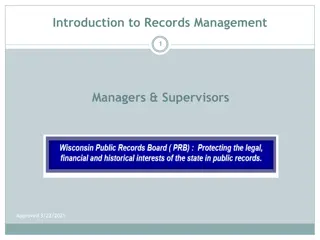Embedding Electronic Health Records System at Community Level
The study explores the feasibility of implementing an Electronic Health Records System (EHRS) within a health and demographic surveillance site in rural Eastern Uganda. It aims to integrate morbidity surveillance data with health facility data to enhance disease monitoring, drug utilization, and health-seeking behavior in the population cohort. The project also focuses on building capacity for pharmacovigilance and pharmacoepidemiological studies on drugs and vaccines.
Download Presentation

Please find below an Image/Link to download the presentation.
The content on the website is provided AS IS for your information and personal use only. It may not be sold, licensed, or shared on other websites without obtaining consent from the author.If you encounter any issues during the download, it is possible that the publisher has removed the file from their server.
You are allowed to download the files provided on this website for personal or commercial use, subject to the condition that they are used lawfully. All files are the property of their respective owners.
The content on the website is provided AS IS for your information and personal use only. It may not be sold, licensed, or shared on other websites without obtaining consent from the author.
E N D
Presentation Transcript
THE 7TH EAST AFRICAN HEALTH AND SCIENTIFIC CONFERENCE 27th 29th March 2019 Nyerere International Convention Centre (NICC) Dar es Salaam, Tanzania Is an electronic health records system(EHRS) possible at community level? A case of embedding EHRS within the health and demographic surveillance site in rural Eastern Uganda. Dan Kajungu, PhD, Collins Gyezaho, Davis Natukwatsa. Makerere University Centre for Health and Population research (MUCHAP) 1
Morbidity Surveillance The collection, analysis and interpretation of data on individuals or groups to detect the occurrence of certain events and their putative causes for i. prevention or control of certain diseases and other health conditions, ii. formulation of interventions, and iii. evaluation of the impact of programs Generally, surveillance requires three functions in this sequence: (1) data collection, (2) analysis and interpretations, and (3) decision making Morbidity data -derived from regularly available sources such as health centers /hospitals, industry and schools. Morbidity data may also be obtained via surveys of representative samples of populations -- e.g., HDSS, National Health Interview Survey, etc.
GOAL A full integration of surveillance platform data with Health Facility data capable of timely delivery of high quality cause or pathogen-specific mortality and morbidity data. Objectives To strengthen the collection of morbidity and mortality data on defined HDSS population thru. linkage of these data to demographic data of residents in the HDSS To setup a system that monitors in real-time the disease burden, drug utilization, health-seeking behavior, ante and postnatal care, vaccination, contraceptive use, risk factors, adverse drug events, morbidity trends and patterns in a population cohort in rural Uganda To build capacity for pharmacovigilance (passive & active) and Pharmacoepidemiological studies on drugs and vaccines
. Health and Demographic Surveillance System HDSS equation for the denominator Verbal Autopsy on all deaths WHO tools, 2016 Exit Out-migrate after 4 months Dynamic Cohort Initial Census (Unique ID given) (Rural/Urban/ Peri-Urban) Enter In-migrate after 4 months Follow up of pregnancies and their outcomes
Data Linkage system Clinical evaluation, diagnostics, medicines prescribed and vaccines, ANC, Immunization and other health data
Patient flow and LAN @Health Facility Out Patient Department (OPD), Triage, Laboratory, Clinics, Pharmacy, Maternity, Vaccinations
What is involved in setting up the system Solar system (not national electricity grid), Inverter, Server, Portable Notebook computers, Networking (switch, cables etc.), Printing health cards (Identifier information), Barcode scanner, System programming (software development), Training , Health workers motivation
REPORTS/OUTPUTS Top five diagnoses 7290 patient visits have been recorded in the system (Since July 2017) 400 350 1980 patients data have been linked to the HDSS data using the HDSS unique identifier. 300 250 No of cases Malaria One health facility covered and planning to extend to five HCs in the HDSS Pneumonia 200 Upper Respiratory Tract Corryza 150 Lumbago 100 50 0
Female Trend in Malaria for individuals five and above years 250 300 250 200 200 No of cases diagnosed No of cases diagnosed 150 150 Malaria pneumonia Upper Respiratory Tract 100 100 PID 50 50 0 0 Dec_17 Jan_18 Mar_18 Dec_18 Sept_17 Feb_18 Sept_18 Jul_17 Jul_18 Oct_17 Oct_18 Jun_18 Nov_17 Nov_18 May_18 Aug_17 Apr_18 Aug_18 Months
Benefits of the system to stakeholders Healthcare workers Medicines Stock control at Pharmacy Report generation (weekly, monthly, annually, quarterly etc.) Computer skills Access to patient medical history by clinicians improves patient care. Patients Patients no longer have to carry exercise books. Reduced time spent at the facility. Researchers and health system (DHO,MOH etc) HDSS provides accurate denominator when calculating disease prevalence. Collect real-time patient data, including healthcare data related to vital statistics, disease incidence, outbreaks, and public-health emergencies by village and Location. Understand population Health Status/trends and outcomes. Disease burden data helps in planning for health services Evaluation of risk factors for illness and ADRs, e. g nutritional or socioeconomic status
Conclusions Routine morbidity surveillance information is vital in planning for health products at facility, enhances adherence to guidelines and most importantly, informing policy and guiding future health care interventions. A good linkage system between HF morbidity data and HDSS population helps to answer scientific questions on determinants of health outcomes. Strengthens the health facilities and provide quality morbidity and mortality data.
Collaborators and partners Districts leadership Technical and political (Iganga & Mayuge) Healthcare providers at Busowobi HC III Community members in Iganga Mayuge HDSS
